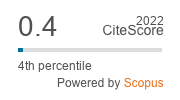Exploring the diversity of coccinellid species: A comprehensive study on polymorphism and species-specific male genitalia identification
DOI:
https://doi.org/10.33307/entomon.v49i3.1262Abstract
In this study, the diversity of coccinellids along with their polymorphic forms is presented, by studying the structure of male genitalia and siphon. Out of the fourteen species of coccinellids listed, eleven species were predaceous on aphids. The male genitalia structures of the five most common species i.e., occinella septempunctata, Co. transversalis, Cheilomenes sexmaculata, Micraspis discolor and M. yasumatsui have been described and found to exhibit characteristic differentiating features. The melanic and non-melanic forms of Ch. sexmaculata, the most ubiquitous coccinellid in the Indian subcontinent, were dissected and shown to have similar male genitalia structures. Problem of misidentification due to polymorphic forms of coccinellid beetles can be mitigated by studying male genitalia and siphonal structures in addition to external morphological studies.
Downloads
Published
How to Cite
Issue
Section
License
Copyright (c) 2024 Association for Advancement of Entomology

This work is licensed under a Creative Commons Attribution-ShareAlike 4.0 International License.


